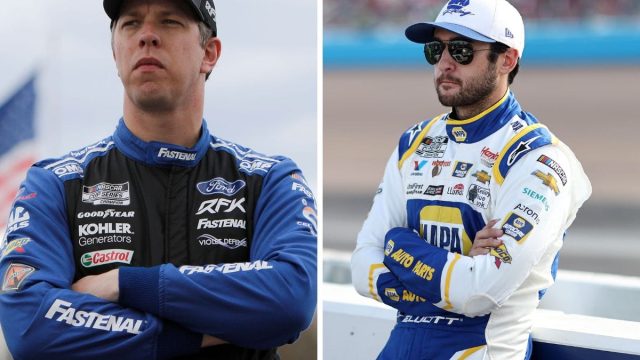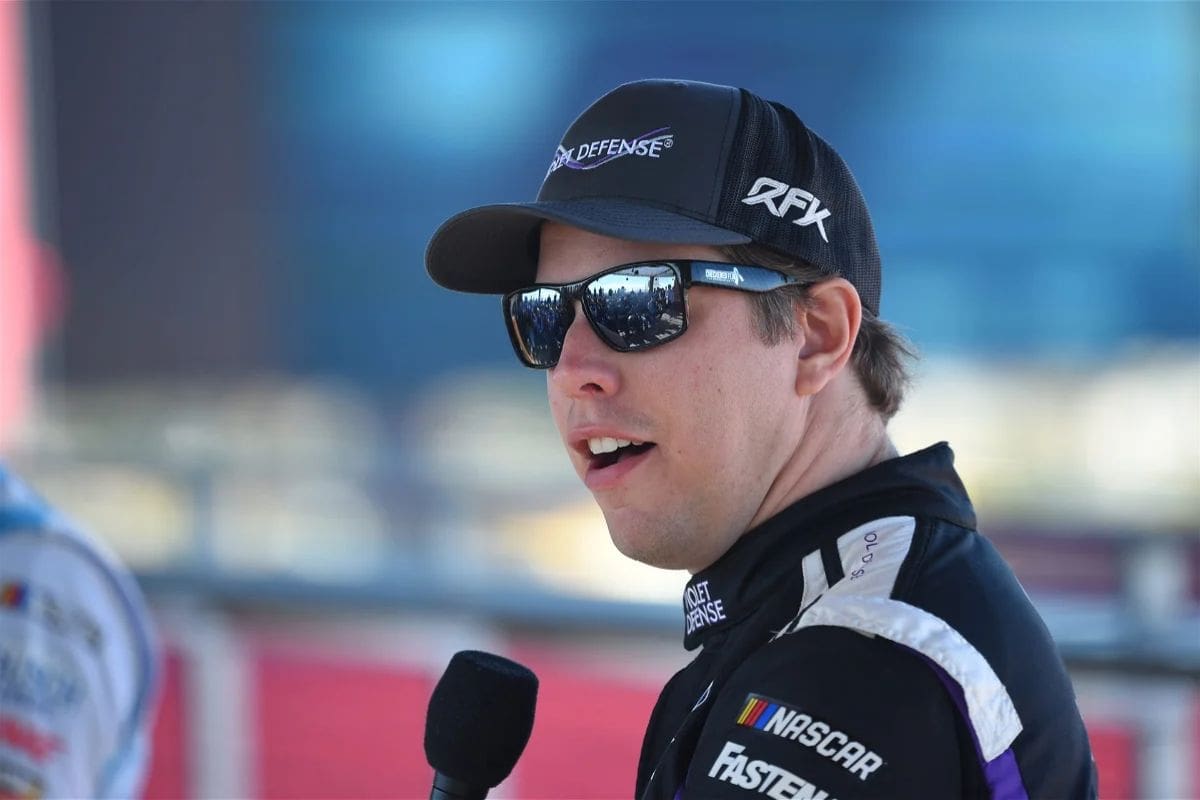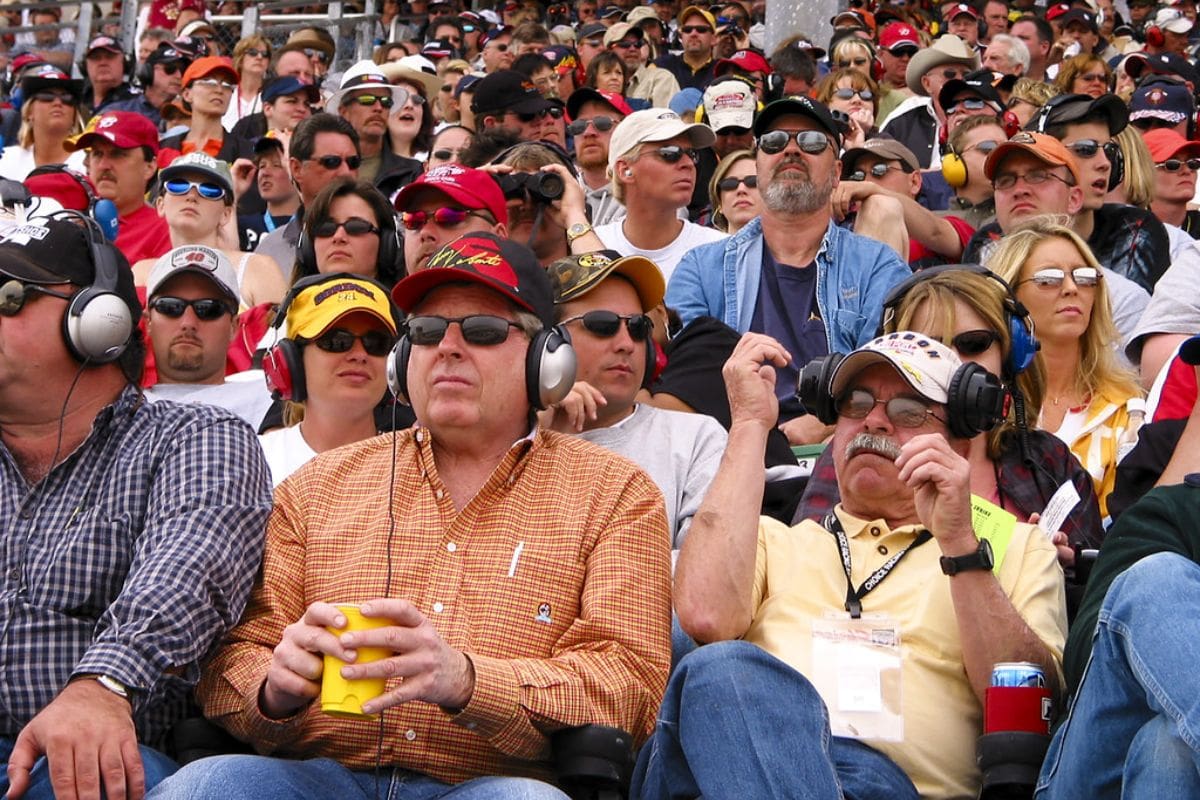Brad Keselowski and Chase Elliott’s Penalty Controversy: The heated exchange between Brad Keselowski and Chase Elliott during the Brickyard 400 reveals deep-seated frustrations regarding NASCAR’s controversial penalty system. Keselowski expressed disbelief over a blend-line violation, questioning the clarity of racing rules, while Elliott’s penalty greatly impacted his race strategy, leading to his emotional outburst. The tension highlights the inconsistencies in rule enforcement that challenge driver morale and performance. As fans react strongly, the divide in sentiment about the penalties reflects broader concerns about fairness in the sport. This controversy could signal a shift in NASCAR’s regulatory approach and fan engagement strategies, laying the groundwork for future discussions surrounding these issues.
Key Highlights
- Keselowski expressed disbelief over a blend-line violation penalty, questioning NASCAR’s clarity in officiating and rule definitions during the Brickyard 400.
- Elliott’s penalty for crossing a designated line altered his race strategy, highlighting frustrations over NASCAR’s inconsistent rule enforcement.
- Both drivers’ reactions reflect growing emotional stakes and frustrations within the sport, affecting morale and performance.
- The Brickyard 400 is a prestigious race, making penalties feel more impactful on drivers’ legacies and championship positions.
Brad Keselowski Shocked Over His Penalty
Brad Keselowski expressed his disbelief and frustration over the recent penalty imposed on him for a ‘blend-line violation‘ during the Indianapolis race, questioning the clarity of NASCAR’s officiating and the specific rules governing pit road behavior. The controversy surrounding this violation highlights a vital issue in the sport: the ambiguity of certain rules and their interpretations by officials. Keselowski’s inquiry, “I don’t understand, what’s the penalty for?” emphasizes a broader concern among drivers regarding the consistency of rule enforcement.
“That’s not what the damn email said. I was not in the racing line.” – (Keselowski)
The core of the blend-line rule is to guarantee that drivers do not merge onto the racing surface prematurely, a regulation designed to prevent dangerous collisions. However, the definition of the ‘racing surface’ has become a controversial point, leading to confusion not just for Keselowski but for many within the NASCAR community. His subsequent statement, “Either I don’t know how to read or they don’t know how to officiate. One of the two.” reflects a growing frustration among drivers who seek clarity and fairness in officiating.
🗣️ "I don't understand, what's the penalty for?" @keselowski asks.
He's told and says "that's not what their damn email said" and says "I was not in the racing line."
📧 "I've read the damn email 20 times, that's not what it said."
— Davey Segal (@DaveyCenter) July 21, 2024
As Keselowski and his team revisited the rules, it became evident that the communication surrounding such penalties must be improved to foster trust and understanding. As the drivers go through the Brickyard 400, the implications of these penalties can greatly impact their performance and general standings.
Chase Elliott’s Outburst Over Penalty
Following the controversy surrounding Brad Keselowski’s penalty, Chase Elliott’s own experience with a similar infraction further emphasizes the frustrations drivers face regarding NASCAR’s enforcement of rules. Elliott, who was racing competitively for the lead, found himself penalized for crossing a designated line on the track—a decision that left him furious and questioning the consistency of NASCAR’s regulations.
Drivers expect clear and consistent application of rules, yet Elliott’s case raises questions about the criteria used for penalties. The penalty notably altered Elliott’s race, forcing him to serve a pass-through on pit road and ultimately putting him a lap down, which can be detrimental in a competitive environment.
“I mean what the f***?! … I do exactly what they f***ing tell us to do. They didn’t say line, they said racing surface, so you tell me how the f*** I was on the racing surface.” – (Elliott)
The Importance of the Brickyard 400
Why does the Brickyard 400 hold such considerable weight for NASCAR drivers? The race, held at the iconic Indianapolis Motor Speedway, is not merely a competition; it represents a pinnacle of achievement in the NASCAR calendar. Winning at this historic venue is a coveted milestone, signifying skill and perseverance.
The Brickyard has a storied legacy, and the prestige of kissing the bricks—a tradition that symbolizes victory—represents the aspirations of every driver. For many competitors, the Brickyard 400 is a chance to solidify their legacy within the sport. The race’s challenging oval layout tests the mettle of drivers, demanding precision and strategy.
After a three-year drought without a win on this track, the urgency intensifies for many; drivers are aware that success here can redefine their careers. The strain to perform is noticeable, as a win at the Brickyard can propel them into the spotlight, garnering not just accolades but also potentially lucrative sponsorships.
NASCAR’s Rules and Enforcement
NASCAR’s rules and enforcement mechanisms are fundamental for maintaining fair competition and guaranteeing driver safety, yet they often generate debate among participants regarding their interpretation and application. The recent controversy surrounding penalties at the Brickyard 400 shows the challenges inherent in enforcing these rules. As displayed by Brad Keselowski’s incredulity over his penalty, misunderstandings can arise, particularly regarding the definition of the “racing surface.”
Precise definitions of terms like “racing surface” are significant to avoid confusion and guarantee fair penalties. Effective communication of rules and penalties to drivers is important to foster understanding and compliance. Consistent enforcement of rules across all teams and races is fundamental to maintain trust in the governing body.
In this instance, Keselowski’s assertion that he was not in the racing line highlights a potential gap in understanding the rule’s application. Such moments reveal the importance of ongoing dialogue between NASCAR officials and drivers to clarify expectations.
Despite the inherent challenges, NASCAR’s rules serve a vital function in promoting safety and integrity within the sport. Continuous refinement of these regulations and their enforcement will be important to address ambiguities and maintain harmony among competitors.
Fans React to the Controversy
Fans have consistently voiced their strong opinions on the recent Keselowski and Elliott controversy, reflecting the heightened emotions surrounding the Brickyard 400 and the stakes involved in the race. As the iconic event returned to NASCAR, the implications of penalties and their enforcement have ignited passionate discussions among the fanbase.
Many supporters expressed outrage at the perceived unfairness of the penalties, particularly towards Chase Elliott’s explosive reactions. His frank use of cursing language resonated with fans who felt that such penalties could reduce the integrity of the race, especially in a crown jewel event. Social media platforms have erupted with comments ranging from calls for a reevaluation of NASCAR’s rules to outright demands for accountability from the governing body.
Conversely, some fans defended the penalties as necessary measures to maintain competitive fairness and uphold the sport’s regulations. The controversy not only emphasizes the stakes involved but also the intricate relationship between drivers and fans, as all the groups grapple with the implications of rules that govern the sport.
News in Brief: Brad Keselowski and Chase Elliott’s Penalty Controversy
The intense reactions from Brad Keselowski and Chase Elliott highlight the ongoing tensions surrounding NASCAR’s penalty enforcement, particularly during events like the Brickyard 400. The controversy emphasizes the critical nature of consistent rule application in maintaining fairness and integrity within the sport.
As fans and drivers similarly grapple with the implications of these penalties, the discourse surrounding NASCAR’s regulatory framework will certainly continue to evolve, prompting necessary dialogue about the future of racing governance.
ALSO READ: Brad Keselowski’s Disappointment at Pocono Due to Setbacks for RFK Racing




I’m very frustrated after watching the Indianapolis race. Why are ru les so inconsistent? Why didn’t the drivers all lk now the same rules, that is the job of NASCAR to make sure that they all understand. Why wasn’t a caution called at the last accident? I have no thing against Kyle Larson, but I dont’ t think it was an honest win becuase of NASCAR’s bad decisions.